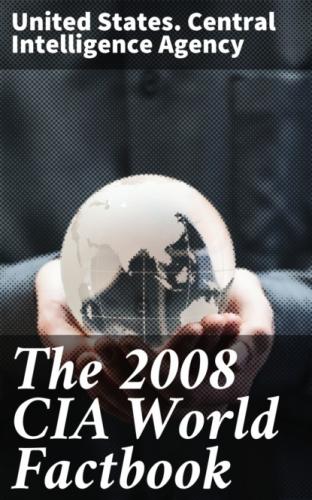Political pressure groups and leaders:
Assembly of Pro-Democratic NGOs [Sergey MATSKEVICH]; Belarusian
Congress of Democratic Trade Unions [Aleksandr YAROSHUK]; Belarusian
Helsinki Committee [Tatiana PROTKO]; Belarusian Organization of
Working Women [Irina ZHIKHAR]; Charter 97 [Andrey SANNIKOV]; For
Freedom (unregistered) [Aleksandr MILINKEVICH]; Lenin Communist
Union of Youth (youth wing of the Belarusian Party of Communists or
PKB); National Strike Committee of Entrepreneurs [Aleksandr
VASILYEV, Valery LEVONEVSKY]; Partnership NGO [Nikolay ASTREYKA];
Perspektiva kiosk watchdog NGO [Anatol SHUMCHENKO]; Vyasna [Ales
BYALATSKY]; Women's Independent Democratic Movement [Ludmila
PETINA]; Youth Front (Malady Front) [Dmitriy DASHKEVICH, Sergey
BAKHUN]; Zubr youth group [Vladimir KOBETS]
International organization participation:
BSEC (observer), CEI, CIS, CSTO, EAEC, EAPC, EBRD, FAO, GCTU, IAEA,
IBRD, ICAO, ICRM, IDA, IFC, IFRCS, ILO, IMF, IMSO, Interpol, IOC,
IOM, IPU, ISO, ITU, ITUC, MIGA, NAM, NSG, OPCW, OSCE, PCA, PFP, UN,
UNCTAD, UNESCO, UNIDO, UNWTO, UPU, WCO, WFTU, WHO, WIPO, WMO, WTO
(observer)
Diplomatic representation in the US:
chief of mission: Ambassador Mikhail KHVOSTOV chancery: 1619 New Hampshire Avenue NW, Washington, DC 20009 telephone: [1] (202) 986–1604 FAX: [1] (202) 986–1805 consulate(s) general: New York
Diplomatic representation from the US:
chief of mission: Ambassador (vacant); Charge d'Affaires Jonathan MOORE embassy: 46 Starovilenskaya Street, Minsk 220002 mailing address: PSC 78, Box B Minsk, APO 09723 telephone: [375] (17) 210–12-83, 217–7347, 217–7348 FAX: [375] (17) 234–7853
Flag description:
red horizontal band (top) and green horizontal band one-half the width of the red band; a white vertical stripe on the hoist side bears Belarusian national ornamentation in red
Economy
Belarus
Economy - overview:
Belarus has seen little structural reform since 1995, when President LUKASHENKO launched the country on the path of "market socialism." In keeping with this policy, LUKASHENKO reimposed administrative controls over prices and currency exchange rates and expanded the state's right to intervene in the management of private enterprises. Since 2005, the government has re-nationalized a number of private companies. In addition, businesses have been subject to pressure by central and local governments, e.g., arbitrary changes in regulations, numerous rigorous inspections, retroactive application of new business regulations, and arrests of "disruptive" businessmen and factory owners. A wide range of redistributive policies has helped those at the bottom of the ladder; the Gini coefficient is among the lowest in the world. Because of these restrictive economic policies, Belarus has had trouble attracting foreign investment. Nevertheless, GDP growth has been strong in recent years, reaching nearly 7% in 2007, despite the roadblocks of a tough, centrally directed economy with a high, but decreasing, rate of inflation. Belarus receives heavily discounted oil and natural gas from Russia and much of Belarus' growth can be attributed to the re-export of Russian oil at market prices. Trade with Russia - by far its largest single trade partner - decreased in 2007, largely as a result of a change in the way the Value Added Tax (VAT) on trade was collected. Russia has introduced an export duty on oil shipped to Belarus, which will increase gradually through 2009, and a requirement that Belarusian duties on re-exported Russian oil be shared with Russia - 80% will go to Russia in 2008, and 85% in 2009. Russia also increased Belarusian natural gas prices from $47 per thousand cubic meters (tcm) to $100 per tcm in 2007, and plans to increase prices gradually to world levels by 2011. Russia's recent policy of bringing energy prices for Belarus to world market levels may result in a slowdown in economic growth in Belarus over the next few years. Some policy measures, including tightening of fiscal and monetary policies, improving energy efficiency, and diversifying exports, have been introduced, but external borrowing has been the main mechanism used to manage the growing pressures on the economy.
GDP (purchasing power parity):
$103.5 billion (2007 est.)
GDP (official exchange rate):
$44.77 billion (2007 est.)
GDP - real growth rate:
8.2% (2007 est.)
GDP - per capita (PPP):
$10,600 (2007 est.)
GDP - composition by sector:
agriculture: 8.7% industry: 40.6% services: 50.6% (2007 est.)
Labor force:
4.3 million (31 December 2005)
Labor force - by occupation:
agriculture: 14% industry: 34.7% services: 51.3% (2003 est.)
Unemployment rate:
1.6% officially registered unemployed; large number of underemployed workers (2005)
Population below poverty line:
27.1% (2003 est.)
Household income or consumption by percentage share:
lowest 10%: 3.4% highest 10%: 23.5% (2002)
Distribution of family income - Gini index:
29.7 (2002)
Investment (gross fixed):
30.8% of GDP (2007 est.)
Budget:
revenues: $20.75 billion expenditures: $20.87 billion (2007 est.)
Fiscal year:
calendar year
Inflation rate (consumer prices):
8.4% (2007 est.)
Central bank discount rate:
10% (31 December 2007)
Commercial bank prime lending rate:
8.58% (31 December 2007)
Stock of money:
$4.065 billion (31 December 2007)
Stock of quasi money:
$6.823 billion (31 December 2007)
Stock of domestic credit:
$12.16 billion (31 December 2007)
Agriculture - products:
grain, potatoes, vegetables, sugar beets, flax; beef, milk
Industries:
